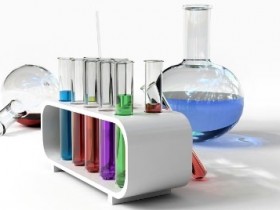Dysbacteriosis - clinical manifestations

Usually, goiter is diagnosed based on the clinical picture of the disease. The main clinical manifestations of the disease, that are common, as for adults, and children, are:
- violation of the general well-being (dehydration, intoxication);
- weight loss;
- symptoms of the mucous membranes of the gastrointestinal tract;
- violation of the digestive processes in any of the GIT.
However, in order to be installed accurate diagnosis requires laboratory diagnosis of dysbiosis.
Modern methods of diagnosis dysbacteriosis
In modern medicine, there are many methods of diagnostics of violations of the intestinal microflora. Separate the two types of diagnosis flora imbalance: direct and indirect.
Direct methods of diagnosis of dysbiosis
Today the most common laboratory method of research supports the bacteriological analysis of feces for dysbacteriosis (sowing). However, the overall picture of the patient's condition, this analysis does not, since it shows only the state of the microbes, that it is located in the colon, or rather in the course of his department. Unfortunately, on the state of intestinal microflora this analysis tell you absolutely can not.
Moreover, bacteriological diagnosis of intestinal dysbiosis is the conclusion of a minimum 14, and the maximum 25 species of bacteria, despite, that lives in the intestines of more than four hundred.
Obtaining reliable results sowing of dysbacteriosis is possible only if complete sterility, the correct transporting material (adherence to the required temperature), and analyzing the faeces after no more than three hours after intake. Tragically, nowadays such conditions may possess only a few laboratories and for this reason,, usually, analysis of the results already distorted.
but, despite that this dysbiosis diagnosis method has the distinct advantage. In comparison with other types of analyzes, conducted when establishing intestinal imbalance, it is the cheapest and with his help we can determine the number and type of microbes. true, the duration of about one week.
On the state of intestinal flora can get information after seeding of the intestinal wall biopsy or aspirate, contained therein. true, These studies are complex technically and they are carried out only in extreme cases.
In recent years, more use PCR diagnosis of dysbiosis (polymerase chain reaction). Popular method is the, that it is very versatile, namely to carry out this study no clear requirements for the material.
When fecal dysbacteriosis using diagnostic PCR in the applied material was isolated DNA fragment or RNA of the pathogen. It is worth noting, that the selection is typical only specific pathogen. In the future, it is finished to the dimensions, that will be sufficient for a visual check.
Another feature of this method of laboratory research is the speed of its. Besides, when it is determined by the presence of bacteria aid, even if it is only present in a single cell and is not close to the intestinal lumen. true, This analysis can be accurate, provided, that pathogenic viruses and bacteria are known. In other words, the study circle is quite limited. In this regard, PCR diagnosis is performed to determine manifested itself infection.
Indirect methods of diagnosis of intestinal dysbiosis

In addition to direct methods of diagnosis "intestinal dysbiosis" is used and indirect. We are talking about chemical methods, during which the collected material was examined for the concentration of products, allocated microorganisms throughout his life. Here it is on their basis and draw conclusions, and the quantity and quality of bacteria in the intestine. This is about:
- GLC, which helps to determine the presence of fat in the feces of volatile acids;
- mass spectrometry.
Such a diagnosis of intestinal dysbiosis to determine from 35 to 40 indicators. The advantages of indirect chemical analysis of the balance of microflora include:
- diagnosis of anaerobic infection, who dies in the open air;
- simultaneous evaluation of both living and dead organisms;
- low concentrations of viruses and bacteria cells, regardless of their origin;
- short term analysis, as the maximum time of the meeting of three hours.
but, despite the positive aspects of this study, There are his and negative, namely:
- to analyze the different species of bacteria requires repeated studies;
- the high price of equipment;
- the complexity of the study on the technical side.
one more, true, not popular methods of diagnosis of dysbiosis serve Breath tests, by means of which it is possible to determine the presence of pathogens in humans, without resorting to the fence faeces. Studies have held breath. However, this method involves a high probability of error. In this regard, conducting respiratory research is used to establish the preliminary results.
Finally it should be emphasized, that nowadays diagnosis of intestinal dysbiosis very complicated procedure. The reason for this serves no real information about the composition of the normal intestinal microflora, as its changes are possible due to the change of weather and climate. The intestinal balance is also influenced by the change of diet. In this regard, the results of, which make it possible to make an unambiguous conclusion, Modern diagnostic methods are not. All laboratories are guided by existing conventional data, so many tests to detect the presence of goiter disease, even with temporary deviations.









Leave a Reply